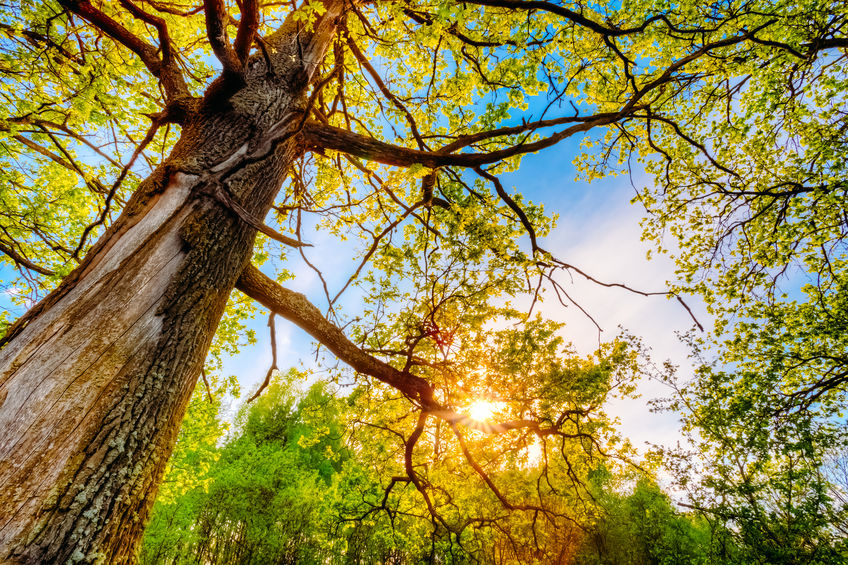- Home
- Firewood Types
- Oak Firewood
Oak Firewood
This post may contain affiliate links so I earn a commission.
Oak firewood is a popular choice for many people who use firewood for heat.
The wood is very dense, heavy and provides excellent heat for your home.
The oak species consists of about 600 different types of trees which can live for 200 years and grow as tall as 100 feet.
The fruit of the oak tree is called the acorn.
The trees start producing acorns when they are 20 years old and by the time the tree reaches 70-80 years old, the tree will be producing thousands of acorns.
 Oak Firewood
Oak FirewoodAcorn production can vary from year to year and occurs in the fall.
Acorn production depends on moisture, disease, temperature and the overall health of the tree.
Even in the most ideal conditions, the oak will only produce an excellent crop about every 4-10 years.
The acorn is an important food source for deer, turkeys, squirrels and many other wildlife.
Acorns also serves as the seed for the oak tree, allowing the tree to spread and the species to survive.
However, only a small percentage of acorns actually become an oak tree.
Only about 1 acorn in 10,000 will become a tree.
Three common species of oak are the northern red oak, white oak and pin oak.
Northern Red Oak
The northern red oak, also called the champion oak, is commonly found throughout the eastern United States and Canada.
The trees are moderate to fast growing and can thrive in a variety of soil conditions.
Red oaks are a very common hardwood and are recognized by their distinctive coarse grain pattern.
 Red Oak Tree
Red Oak TreeThe trees are often used for lumber because it's a very strong, durable wood that glues and machines well.
The red oak is commonly used to produce railroad ties, cabinets, flooring, caskets, furniture and lumber.
Firewood produced by the red oak is comparable to cherry or walnut.
While not as hard as the white oak, the red oak is a nice hardwood suitable for many purposes.
White Oak
The white oak is found throughout the eastern United States and Canada.
White oak is typically not a tall tree, growing 65-85 feet tall which is shorter than the red oak.
The acorns produced by the tree are sweeter and not nearly as bitter as the red oak.
These acorns are an important food source for many animals.
The wood of the white oak is very strong and fine grained.
The wood is harder than the red oak and its premium firewood is comparable to beech or maple.
Pin Oak
The pin oak, also called the spanish swamp oak, is native to Northern America and is typically found in the eastern United States and southern Canada.
The trees grow about 60-70 feet tall and live around 90-120 years.
 Pin Oak Tree
Pin Oak TreePin oaks grow in swampy, lowland areas and produce small thin acorns which are dispersed from September to December.
The pin oak is one of the most popular ornamental trees found in the United States.
The trees thrive in low land, acidic soils, so if they are planted in poor soil with a low iron content the trees can become sick, causing the lower branches to droop.
The pin oak has several small dead branches that stick out from the trunk like "pins" resulting in the name of the tree.
While the pin oak is not as desirable for furniture, cabinets and flooring as the red oak, the tree still produces great firewood.
Oak Firewood Usage
Is oak the best firewood choice?
Depending on who you ask the answer could be yes.
With more than 600 species of oak to choose from (only 55 in the United States), there is a lot of diversity in this species, so it really depends on the kind of oak you decide to burn.

The oak is an abundant tree that can supply a lot of great, dense, long burning firewood.
If you burn oak firewood you will not be disappointed.
White and red oak mature quickly, so there’s some benefit to growing oak trees on your property for firewood.
Splitting Oak
One thing I have found with oak is that it's difficult to split and takes a long time to season.
One thing that all types of oak have in common is that they tend to be quite knotty and stay wet even after the bark is removed.
At least one year of seasoning time is recommended for oak and maybe even longer.
So while oak matures quickly, it will take some time to season the wood before tossing it in your fireplace.
If you let the wood season, it will be worth the wait.
You can make your life a little easier when splitting oak firewood to do so when it is frozen. This will help it come apart easier.
You can also use a splitting block.

Splitting oak firewood on a splitting block will help you distribute the energy throughout the wood rather than the ground.
It is worth noting that the difficulty of splitting oak varies depending on the type of oak.
Green oak (or unseasoned oak) of any species is quite heavy.
The sooner you can split it and let the seasoning start, the better, as it will take quite some time.
Red oak splits a bit more easily, since it has a straighter grain, while white oak is one of the toughest to split.
The Smell Of Oak Firewood
One unique characteristic of oak firewood is the smell after it has been cut.
If I have a lot of oak stacked I can always smell it from several yards away. Some describe the smell as sweet while others describe it as a stinky, nasty smell.
My thoughts.....well, it smells like heat to me!
Personally, I like the smell of oak, but you wouldn’t want to use it to smoke food, as it has a somewhat vinegary smell.
How Well Does Oak Burn?
Oak is also known for being a clean wood - unlike other kinds of wood, like pine, that are filled with sap, oak is nice and clean.
This means it’s not only easier to handle, but it also won’t snap and crackle as much in your fireplace.
It’s better for burning indoors as a result.
Remember, the longer you let your oak firewood season, the hotter it will burn.
If you can wait a year, that’s great. Two to four years - even better!
Burning green wood will dramatically reduce the amount of heat that your fire generates.

Also, burning green oak firewood will cause your length of burning to become shorter.
You’ll have more smoke and lots of creosote build-up, making it unsafe for indoor use. Let your oak season - it’s well worth the wait!
White oak will produce 26.4 million BTUs per cord.
Red oak will produce 24.6 million BTUs per cord.
As you can see, oak has a high BTU rating and burns quite hot.
Although it does have a distinct aroma, it burns cleanly (when allowed to season properly) and burns slower and longer.
It’s found just about everywhere in the United States too, making it an abundant firewood species that you might want to consider!
And if you’re not sure that you want to use up all of your oak on firewood, don’t worry.
There are plenty of other ways you can use the wood from this tree - oak is often used in furniture making, flooring, and cabinetry.
It has a gorgeous grain and with so many species to choose from, you shouldn’t have too much trouble finding one that fits the bill perfectly!

About the Author
Obsessed with firewood, Nick is behind over 350+ of Firewood For Life's articles, as well as countless reviews, guides and YouTube videos to help readers like you reduce heating costs and create the perfect fire.


